Home » Blue Prism Interview Questions 2024
If you are searching for RPA Blue Prism interview question and answer for freshers and experienced? We at EmergenTeck created top BluePrism interview question and answers which will helpful for freshers, beginners and experienced. These blueprism questions and answers have been created by BP certified industry experts. In this blog we will provide you the valuable insights on RPA blueprism interview questions.
Table of content:
RPA stand for Robotic Process Automation. In a nutshell it refers to mimicking human actions or automating the manual steps using a software bot . The process will run in the same way but without any human intervention.
The most ideal candidate for automation are the processes which are stable , and don’t change too frequently . Along with that the frequency of the process should be sufficient enough so that its worth investing licensing fee and development efforts to get good return on investment.
There is no disadvantage as such for RPA. But we need to remember that any RPA process can only be as fast as underlying infrastructure. For ex- If the underlying application is not stable , buggy and freezes frequently , then the performance of the automation would not be as expected.
Below are some documents which might be created as a part of RPA Development lifecycle
Process Definition Doc (PDD) – It basically contains the information about the process which is going to be developed by the developer
Functional Requirements Questionnaire
Solution Design Doc (SDD) — The SDD contains the overall solution architecture of the whole automation which would be developed by developers.
Object Studio –In object studio you create business objects . The objects or BO contain the logic to interact with any application require for the flow . For ex- Desktop App, MS Excel etc.
Process studio – The process contains the flow for the business logic and all the objects are called in process as per the required logic
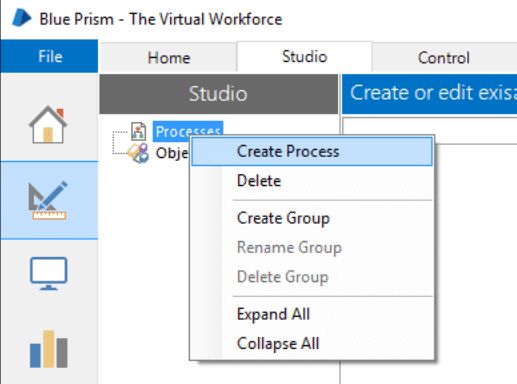
There are some features present only in Object studio for ex
Below are some advantages of creating multiple objects in object layer
If you are using a wait stage in the flow , without specifying any condition, then its called throttling . The flow would mandatorily wait for the time duration specified . Ideally it’s not advised ,but sometimes it might be required.
Below are three sections available in Control Room
Session Management – You can use it to to see the details of the running process
Queue management – Here you can see the details of all work queues present in the environment .
Scheduler – You can use this to see and create schedules as required
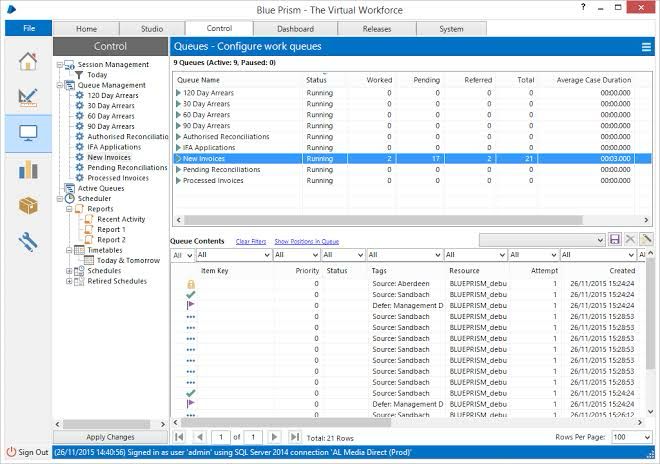
As per the standard best practice, any attribute which is dynamic in nature should be unticked . For ex- IDs, URls Otherwise it might create issues.
Before you interact with any application you have to create Application modeller in which you have to fill various details like Application type , application path etc.
Control room is one of the tabs in Blueprism Interactive client. Using control room you can view the details of sessions, monitor work queues and view/update schedules.
As per the best practice , we need to ensure that before sending the keyboard input to any application Activate it using Navigate stage.
In case you don’t want to open a new instance of an application , you can attach to a running instance using Attach action in Navigate stage.
As per the best practice , a separate object should be created for a popup to interact with.
If the item is marked for retry then it would be copied and added to the work queue to be retried again , in case it’s marked as exception.
When you use Get Next item action in Work queues, you will get attempts as Output.
There are 2 ways to stop a process.

The release manager provides the functionality to create release ( file with extension .bprelease ) so as to allow to deploy the automation across different environments. First you create a package in which you include different components of the automation . For ex- process, objects , Work queue , environment variables etc. Then from that package you can create releases.
Run mode is an object level functionality which allows you to specify how many instances of a process can run on same machine .
There are 3 runmodes – Foreground , Background , Exclusive.
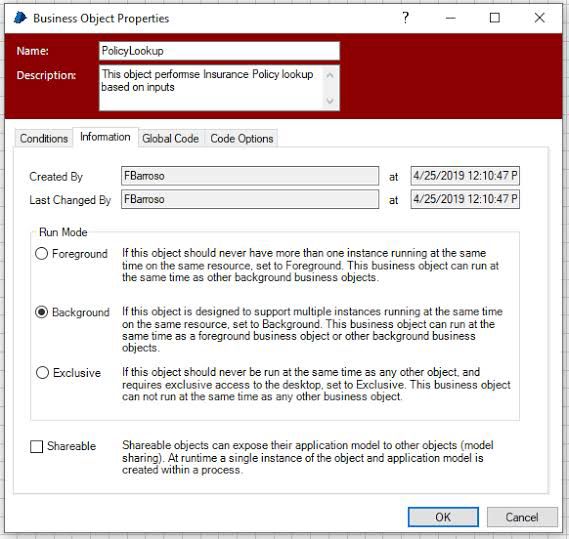
These are different ways you can use to debug a process
Step in – It will run one action at a time — Shortcut key is F11
Step over – It will run one stage at a time – Shortcut key is F10
Step out – It will run process at a time — Shift+F11
Global send key –Send Keys are used to communicate key strokes to the application specified in the App modeller.
Global Send key event– It is used to communicate the key strokes to the OS
When Match index is selected, blueprism would work with the item found in sequence equal to the index number specified and which matches all the attributes of element.
If Match Reverse is selected then the element search would happen from the bottom to the too. Instead of top to bottom order rather than the default top-down order.
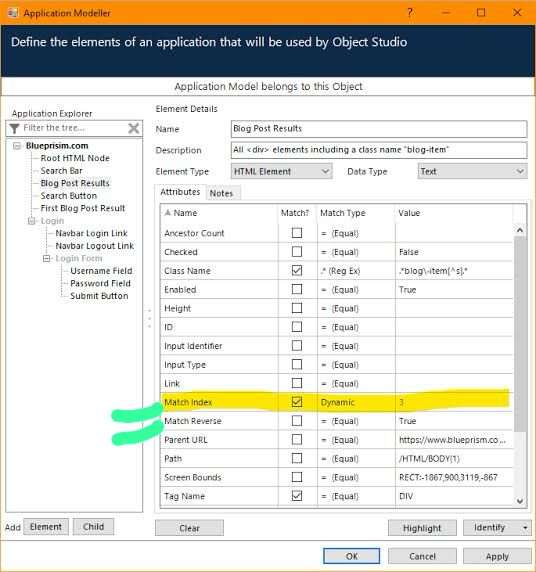
A code stage allows you to run your own custom code in C# , VB, J#. You can specify input output data item in it.
A Block used in exception handling allows you to limit the scope of Recover stage to a specific set of stages. It helps to prevent infinite loop.
The status icon a work queue item tells you the present state of an item . It tells you if the item is in pending state, Completed , Locked or Markd as exception.
Tags are one of feature which is like adding additional metadata to the work queue items. For ex – You can add tags to identify the source of data . For ex- from CSV file , from Spreadsheet , etc.
In case you don’t to process items immediately after adding to the queue , you can defer the items . The items will remain in pending state till the defer time duration timestamp has elapsed. No process would be able to pick these items till then.
In order to get the reports from Work queue for various items You can use Get Report data .Based on your requirement you can specify the flags in the parameters.
There are 3 choices available for Data items exposure
Environment variables provide a convenient way to create some global data items which can be accessed by all processes . You can create them by going to System Tab. In this way you can change value in one place and all processes can take the updated value from environment variable. You cant change the value of EV from process.

Session variable as the name suggests are specific to the session of a process.You can modify its value when the session is running and the updated value would be immediately available to the flow.
When adding items to the queue , you can also define the priority of an item .The priority defines the sequence in which the item would be picked for processing. The lower the number , higher the priority. It’s an input parameter in Add item to queue action.
These are the variables which would be available to all pages in the object.
If this happens then all the Items which are locked for processing would be marked as exception in the Work queue with tag Exception marked for cleanup.
It is central repository for storing the data to be processed. You can add data to queue in the form of a collection. It helps to divide the workload among different resources. Once the item is locked by one process, other processes wont be able to pick the same item. You can use Get Next item to pick one row from the work queue.
As per the best practices from Blueprism , The main page should have high level steps broken into different sub pages in the process. On the main page all the sub pages are called as per the business logic .
If you want to expose an object as webservice , You need to go to Systems tab
Make sure the queue is encrypted and don’t make any confidential value as key in the queue as it’s value would be visible.
The items still in the pending state (denoted by … in the status column ) can be called as unworked items . This means they are still yet to be picked up for processing by any process.
Exception handling refers to putting the logic in place for allowing the process to recover from any exception which has occurred in the flow Using a combination of Recover, Resume and block stage we can implement exception handling in our flow.
This is one option available in Exception stage . If you want the actual exception to be preserved and bubble up in the flow ,then you can tick that option.
If the application is already attached , then attaching it again can cause issues . To prevent that you can check if the application is attached to the App modeller by using a Is connected action in a Read Stage in an object .
If you want to use any collection field in any expression , you can call it using [CollectionName.Field] syntax.
To change the value of an environment variable you need to go to System tab
A dynamic element is an element in App modeller , which has one of the attributes which can take external value supplied in the flow.
To add delay in process studio you can use action Utilitie-Genral VBO >Sleep action. You can specify the duration is seconds.
This is possible only if the item with Priority 0 is in deferred state . It would be picked only after the deferred time duration has elapsed.
‘Internal exception refers to exception generated by Blueprism internally.
These are functions used for storing the exception detail and type whenever any exception has occurred in the flow. You can use them between Recover and resume stage.
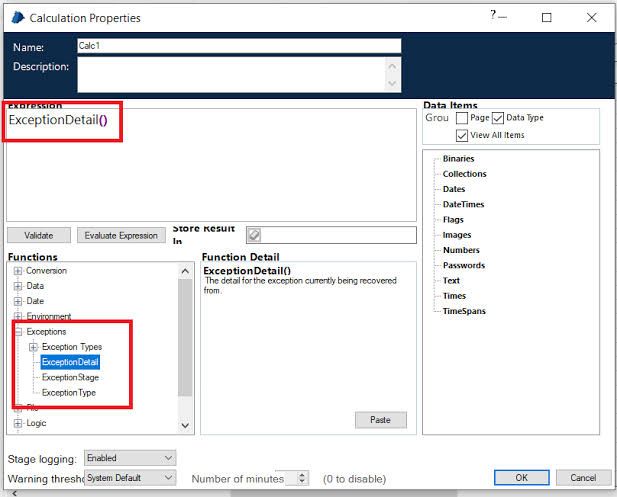
Login agent allows us to login into windows or unlock without acquiring someone to the enter the credentials.
Multibot architecture is mainly used when one bot would be unable to service the requests within SLA. Hence multiple resource machines are used to paralelly process the load.
In order to properly implement Multibot architecture , there should be environment locking in place in the flow , so that I would make sure that not all bots would start working simultaneously.
For ex- Lets assume you are going to add items from an excel spreadsheet to work queue and then process them . If you are going to run it on multiple bots then you need to make sure that only that bot which has got the environment token would first add the source data to the queue , while other bots would wait for it to complete.
There are some business objects which need not to be installed separately . These are called Internal business objects .Collections, Work Queues, Calendars, Credentials, environment locking and Encryption.
Right now its not possible to add a collection to an ev var.
We hope you find these questions valuable. If you have any further questions that you would like answered, please contact us here: https://kausalvikash.in/contact/
EmergenTeck is a holistic training platform that helps learners ace RPA, Agentic Automation, Microsoft Power Platform, Informatica, AI and other emerging technologies. We help you build lucrative careers in technologies and skills that are in high demand across the world.
© 2017-2025 Emergenteck Training And Development Services LLP. All Rights Reserved.
WhatsApp us
Thanks for showing interest.
Please complete your registration process and your expert team will come back to you with Demo/Training details.